Every year on July 16, conservationists and wildlife lovers around the world recognize World Snake Day—an opportunity to reexamine and reconsider our inate and often unreasonable fear of snakes. Here on the Yucatan peninsula, that fear runs deep, often rooted in cultural beliefs and limited understanding. Stories passed down from generation to generation have taught people to be fearful. Yet the reality is that most encountered in the Yucatan region are non-venomous and integral to local ecosystems.
So where does the fear come from? Is it cultural? Religious? Practical? The answer is: all of the above.
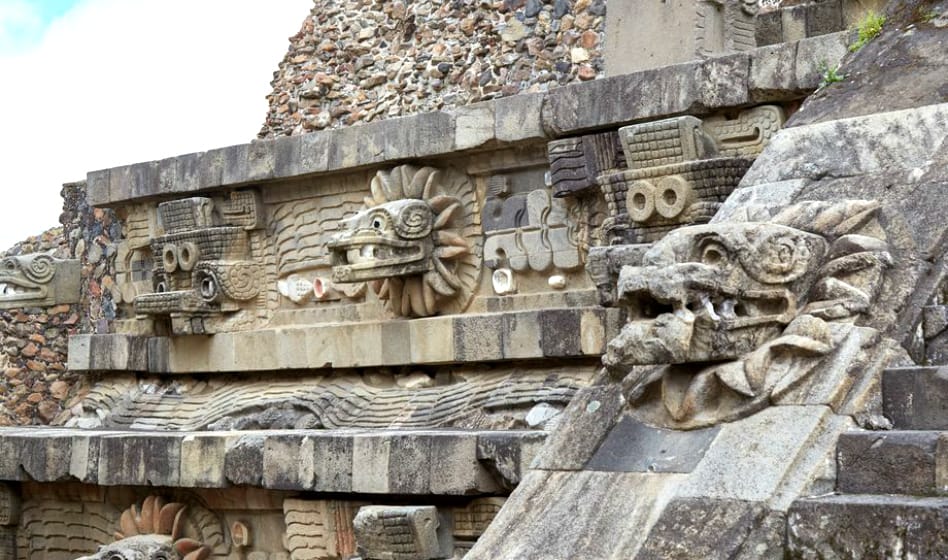
Contents
Understanding the Fear of Snakes in Mexico
Throughout Mesoamerican history, snakes have symbolized both reverence and danger. In pre-Hispanic civilizations such as the Maya and Aztec, serpents were powerful spiritual symbols. The feathered serpent Quetzalcóatl represented creation, fertility, and divine knowledge. Maya cosmology connected snakes with rain, fertility, and the underworld. They weren’t feared—they were honored.
With the arrival of Spanish colonization and Catholic teachings, these views shifted. In Judeo-Christian doctrine, the serpent embodies temptation and evil—associations that deeply influenced colonial attitudes. Combined with practical concerns about venomous species, these perceptions shaped a persistent cultural fear of snakes that continues today. These imported religious ideas combined with the real dangers posed by a few venomous species and transformed the snake into a creature to be killed on sight. This legacy of fear and moral suspicion continues in many rural and urban parts of Mexico.
Unfortunately, this fear is often misplaced. Many of the snakes most frequently encountered in the Yucatán Peninsula are entirely harmless.
Why Snakes Are Crucial to Our Ecosystem
Snakes play a vital role in the world’s delicate ecological balance. They help regulate populations of rodents, insects, lizards, and even other snakes. Without snakes, pest populations would explode, potentially damaging crops, residental and commercial property and increasing the spread of disease.
They’re also food for larger predators like hawks and coatis, creating an important link in the food chain. And yet, many non-venomous snakes are killed out of pure fear or confusion. I can’t tell you how many times I have had to stop a gardener from going after a harmless boa or rat snake with a machete.
When it comes to snakes in the Yucatan, knowledge is the best antidote to fear. Of the 51 registered species of snakes found on the peninsula, only 5 are considered dangerous to humans. Education is key. Knowing which snakes are dangerous—and which aren’t—can help alieviate fear and prevent unnecessary harm to both wildlife and people.
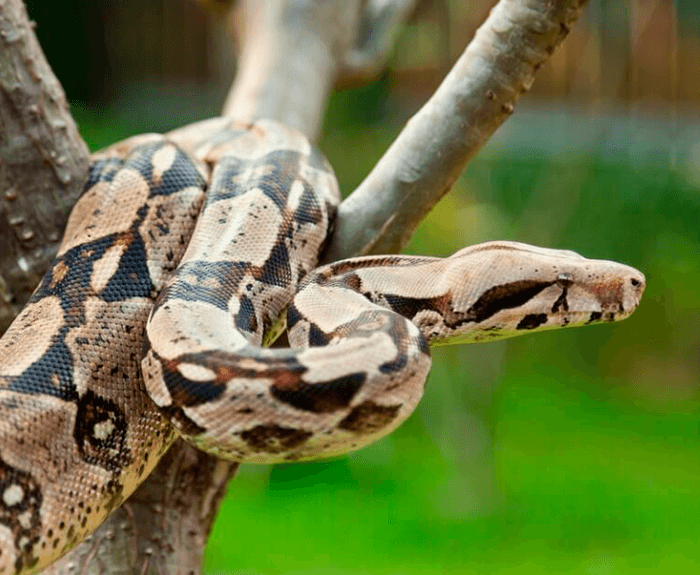
Common Non-Venomous Snakes in the Yucatan
These snakes are harmless to humans and beneficial to the environment:
- Boa Imperator (Boa imperator) Large but gentle, these slow-moving snakes are important rodent predators. Terrestruila and tree-dwelling, boas can be found in forests, mangroves, and even in residencial areas. Frequently seen on golf courses they are indifferent to human presence.
- Mexican Parrot Snake (Leptophis mexicanus) Thin and green with large eyes, this arboreal snake feeds on small reptiles and amphibians and birds’ eggs. Semi-venomous but harmless to humans.
- Yucatan Rat Snake (Pseudelaphe phaescens) Fast-moving and curious, rat snakes feed on rodents and birds. Completely non-aggressive. This is a protected species in Mexico.
- Tropical Milk Snake (Lampropeltis triangulum annulata) Brightly colored in red, black, and yellow or white. Often confused with the coral snake but completely harmless.
- Indigo Snake (Drymarchon melanurus) One of the largest snakes in the region, known to eat venomous snakes. They are active during the day and pose no danger to humans.
- Brown Vine Snake (Oxybelis aeneus) Slender, vine-like snake with a pointed snout. Mildly venomous but harmless to humans, it hunts small lizards and frogs, small rodents and birds. and is often overlooked due to its excellent camouflage.

Venomous Snakes to Avoid in the Region
While most snakes in the Yucatan are not venomous, there are a few dangerous species to be aware of:
- Variable Coral Snake (Micrurus diastema) Small and brightly colored in red, yellow, and black. Venomous but shy and rarely aggressive. Bites are extremely rare.
- Barba Amarilla / Fer-de-Lance / Nauyaca (Bothrops asper) Highly venomous and potentially aggressive if threatened. Usually found in forested or rural areas.
- Yucatan Rattlesnake (Crotalus tzabcan) Recognizable by their rattle and triangular head. They will warn before striking and tend to avoid populated areas. Rarely seen.
- Cantil Yucateco (Agkistrdon russeolus) A variety of pit viper related to the Water Moccasin and the Cottonmouth, Cantil are generally shy and prefer to flee from danger, but will strike if threatened.
- Yucatán Hognosed Pitviper / Cuatro-narices (Porthidium yucatanicum) Easily recognizable by its distinctive upturned nose. Highly venomous but not aggressive and prefers to avoid contact with humans.
How to Tell the Difference
Not every snake you find should be killed, therefore, and it would do the Yucatan environment a world of good if we all learned how to tell the venomous apart from the harmless. If you’re unsure whether a snake is venomous, here are some quick tips:
- Color Patterns: Coral snakes have red bands touching yellow; harmless milk snakes have red bands touching black. When in doubt, remember: “Red on yellow will kill a fellow. Red on black is a friend of Jack.”
- Head Shape: Venomous snakes often (but not always) have a triangular head. Non-venomous snakes typically have rounded heads.
- Pupil Shape: Venomous species often have vertical slit pupils. Harmless snakes usually have round pupils.
- Behavior: Most non-venomous snakes will flee if given the chance. Venomous snakes may coil, rattle, or stand their ground if cornered.
Still unsure? It’s better to be safe than sorry. Keep your distance, take a photo, and contact a local wildlife expert.
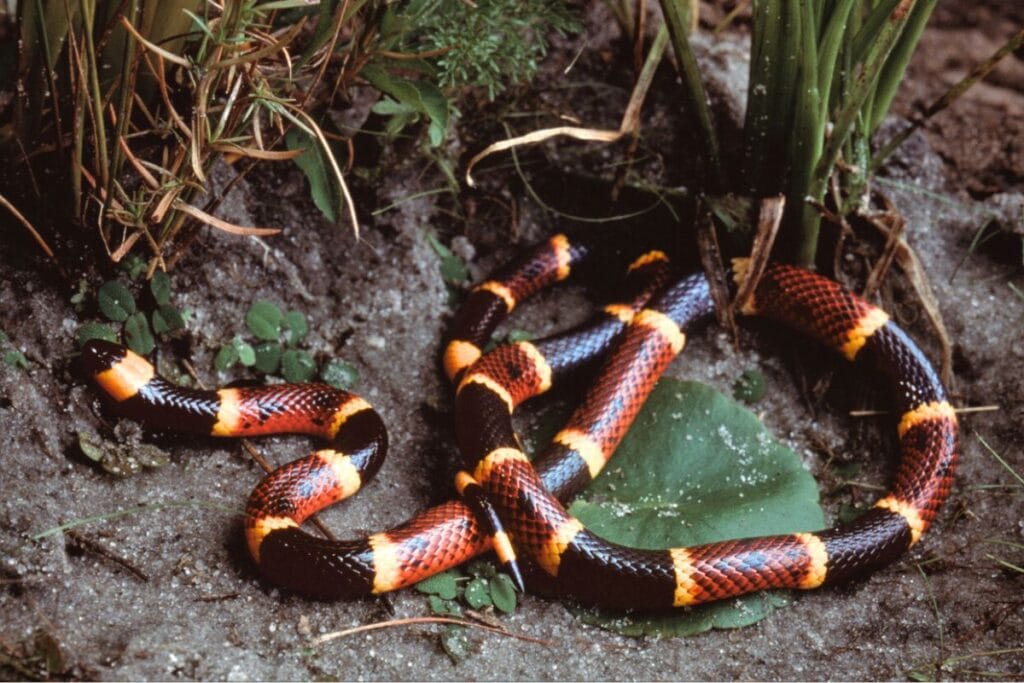
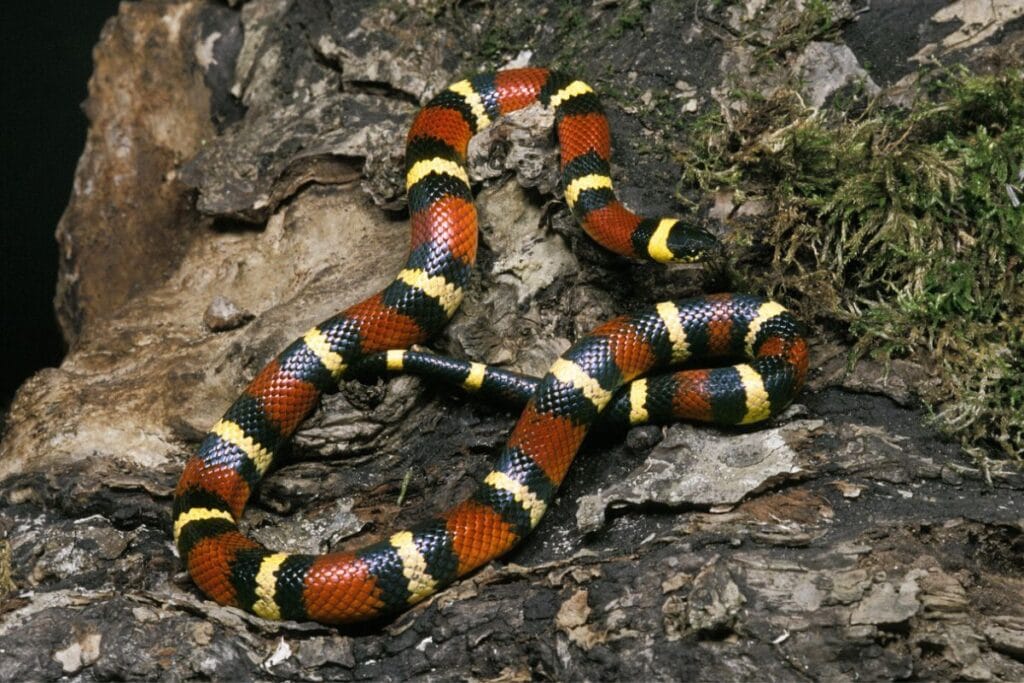
Friendly and Harmless Lookalikes
A tricky feature of dealing with venomous snakes in the Yucatan is that several perfectly harmless, gentle species look very much like a venomous species. This is especially the case with coral snakes. Because of their coloration, the harmless Redback Coffee Snake, the Tropical Milksnake and the unfortunately named Snail Sucker all look similar to venomous coral snakes. Some of these are quite common, and are likely to be seen during the day.
The vast majority of snakes we see killed in error are False Coral or Milksnakes mistaken for Coral snakes and Rat Snakes mistaken for venomous species like the Fer-de-Lance or the Yucatan Cantil. Unfortunately, the school of thought amongst most gardeners seems to be: “When in doubt, get the machete out.“
Why Killing Snakes Hurts Us All
Killing snakes disrupts the ecological balance. It removes natural pest control, breaks food chains, and can even increase encounters with more dangerous species. Some venomous snakes prey on non-venomous ones, and eliminating the harmless snakes can leave a void which will be filled by more aggressive predators.
Many native snake species in Mexico are actually protected under environmental laws. Killing them may not just be unnecessary—it may also be illegal.
The best thing you can do when encountering a snake? Give it space. Most snakes are not aggressive and will leave if left alone. Teach children (and household staff) to identify local species and understand their role in nature. If a snake is inside your home or in a location where it poses a danger, call a local relocation expert rather than killing it.
Conservation groups across the Yucatán Peninsula are working to reeducate the public and protect local snake species. World Snake Day is a great opportunity to support these efforts.
For an excellent resource covering the snakes of the Yucatan, click on the image below for a downloadable field guide. This pdf includes many of the venomous, mildly venomous and non-venonmous varieties that exist here in a very easy to read format—perfect to print up and give to your household staff or visiting guests who may be curious or concerned.
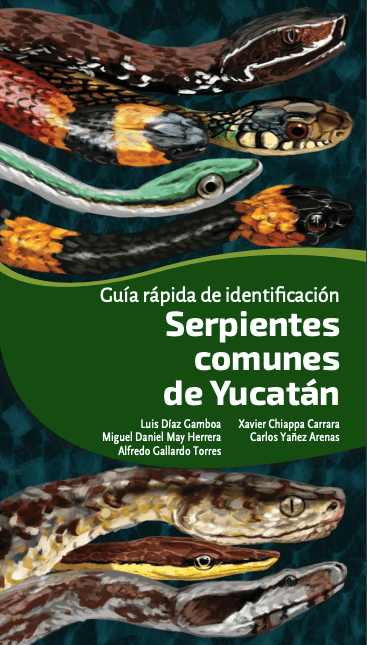
Final Thoughts
Snakes really don’t deserve their bad reputation. In fact, they’re among the most misunderstood animals in Mexico. For centuries, they were revered as symbols of wisdom and rebirth. I know not everyone agrees, but I think they are beautiful and worthy creatures in their own right.
Snakes play an important part in maintaining the balance of species in the ecosystem, especially with regard to controlling rodent populations and today’s science backs up what ancient cultures already knew: snakes are vital, not vile.
So next time you spot one slithering across the sidewalk or resting near your garden, take a breath, don’t panic and appreciate the role it plays in the natural world.

